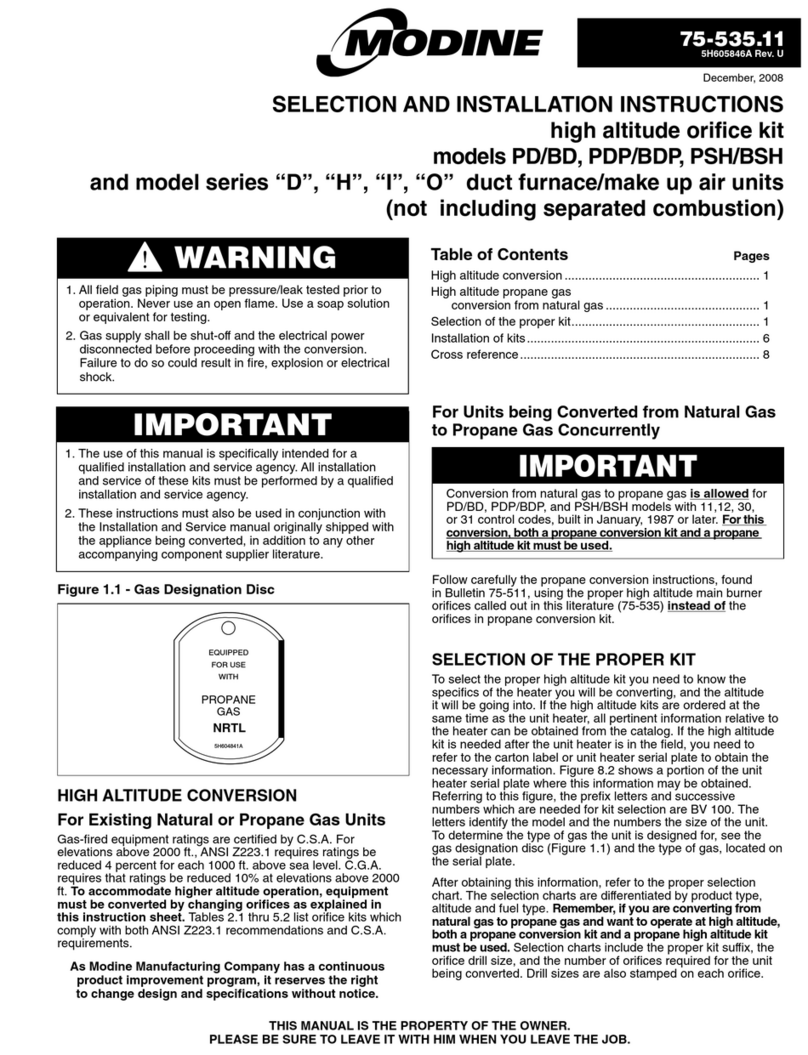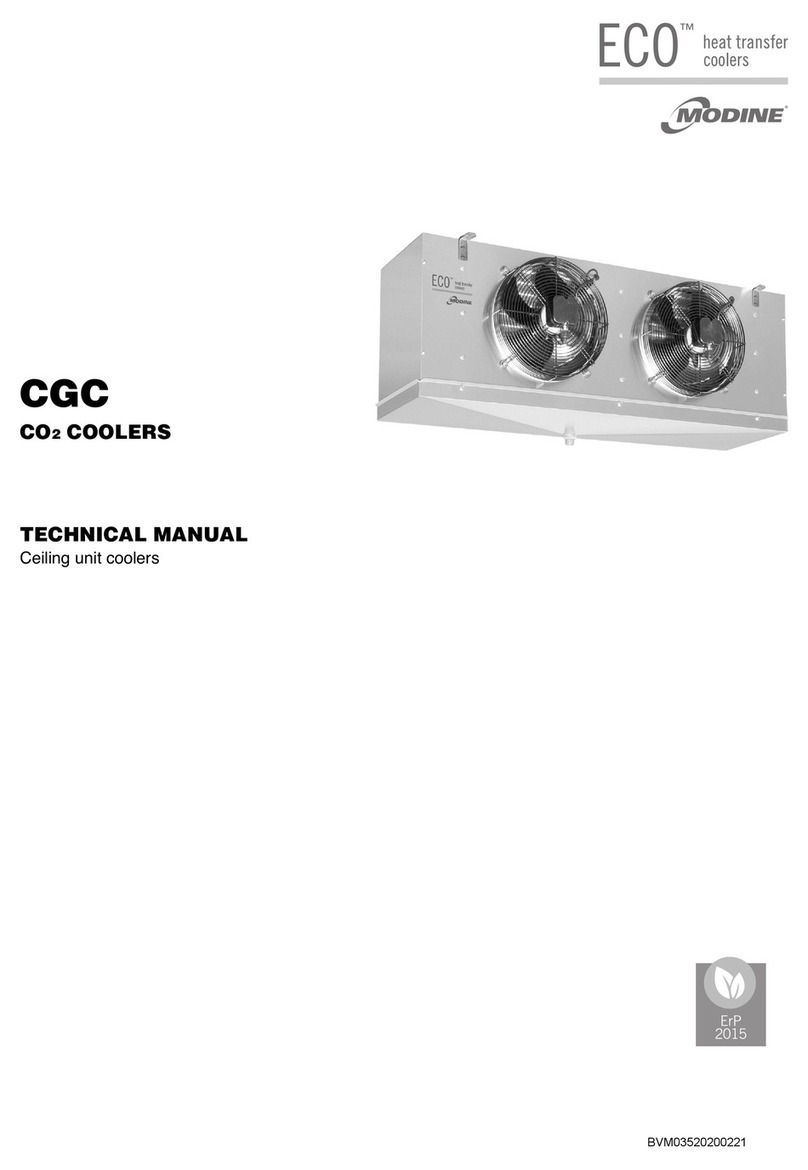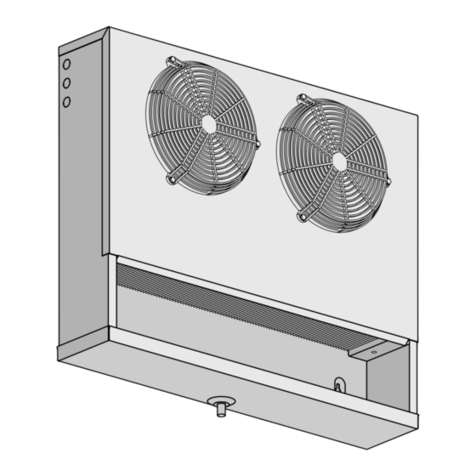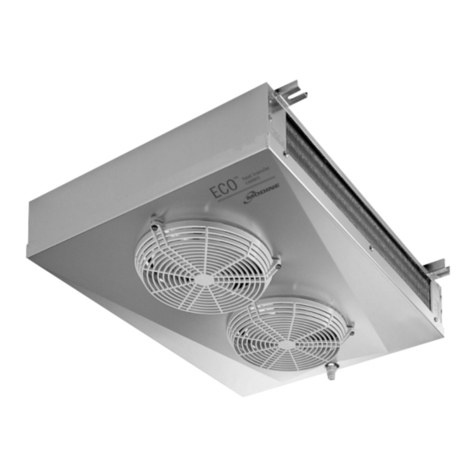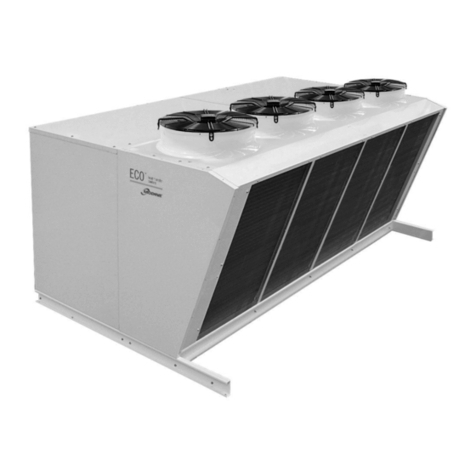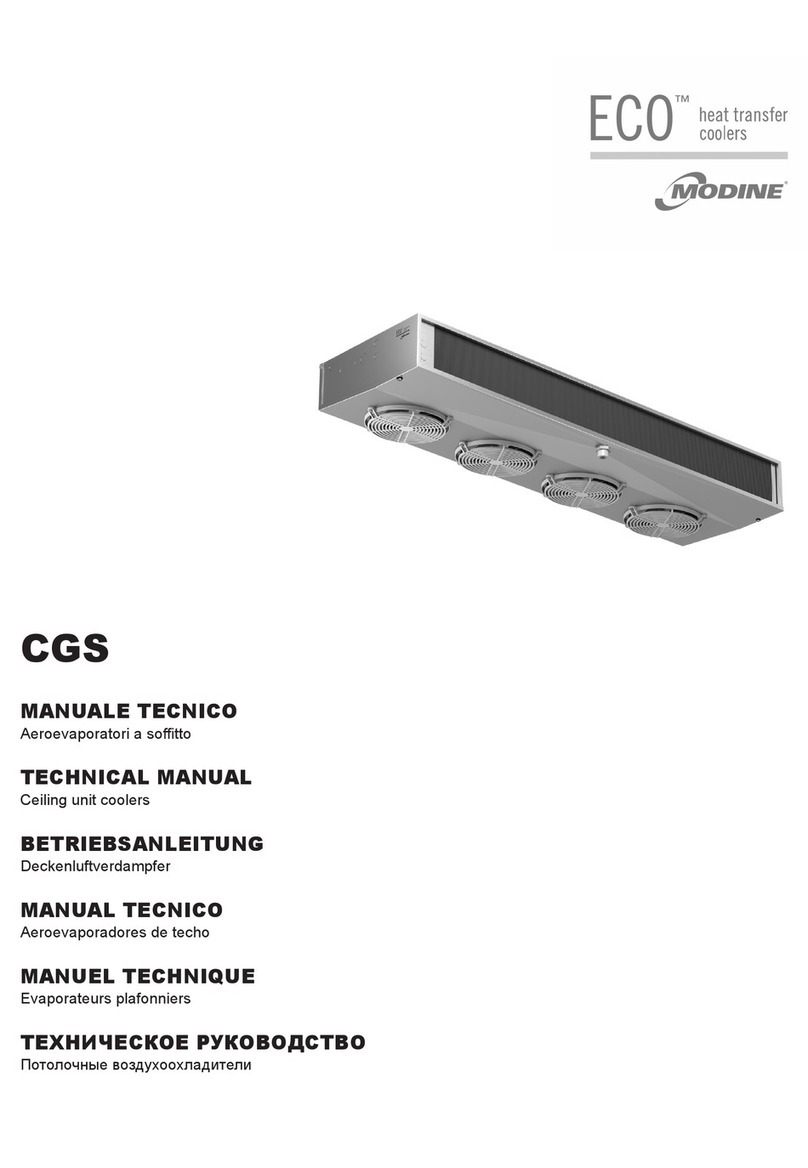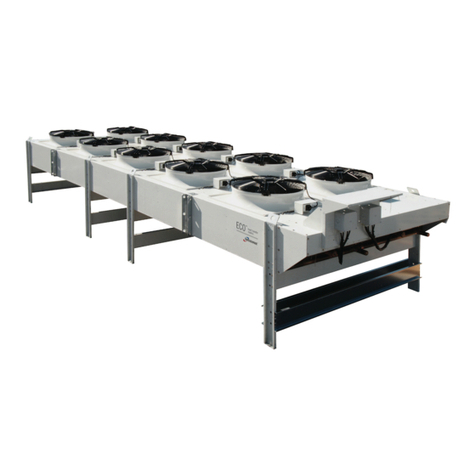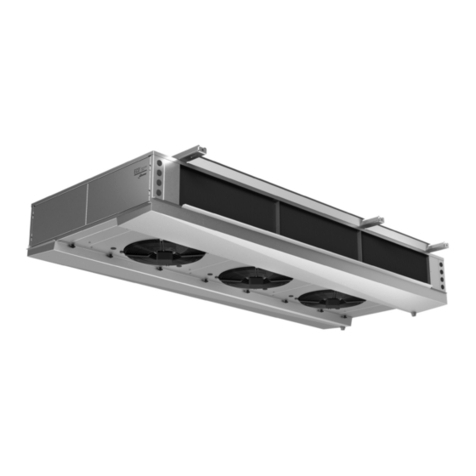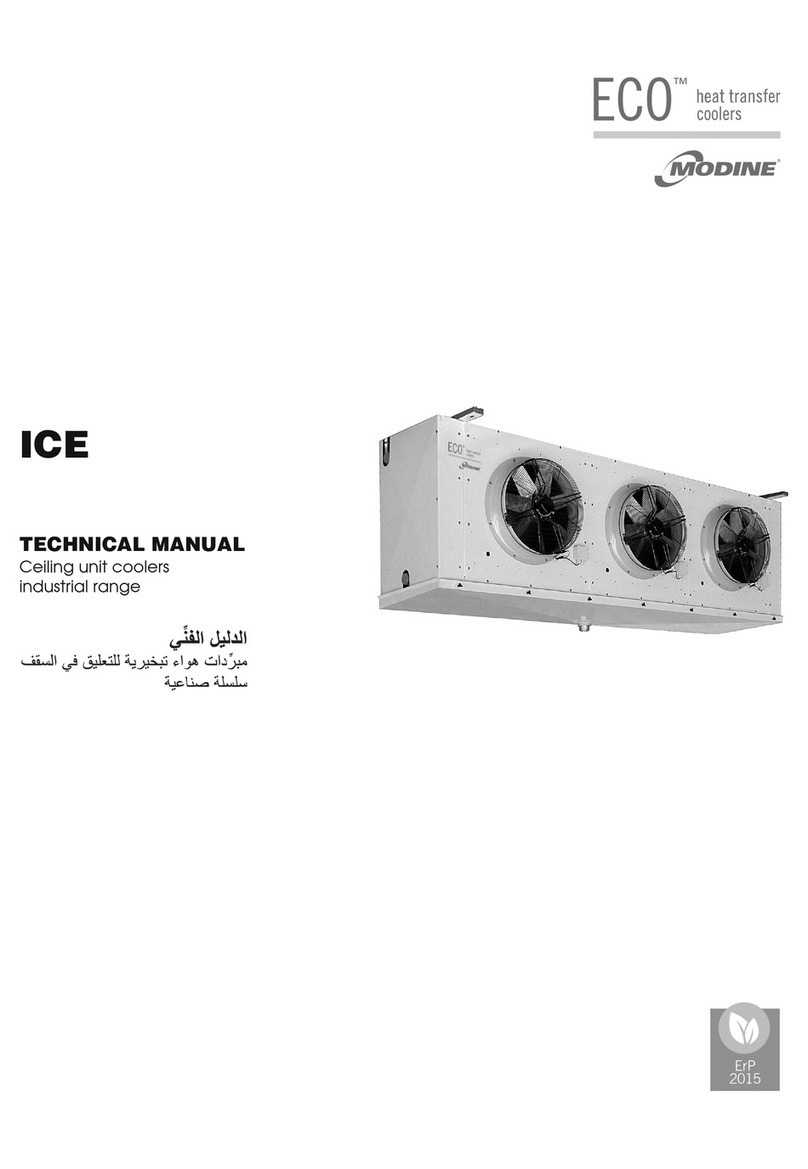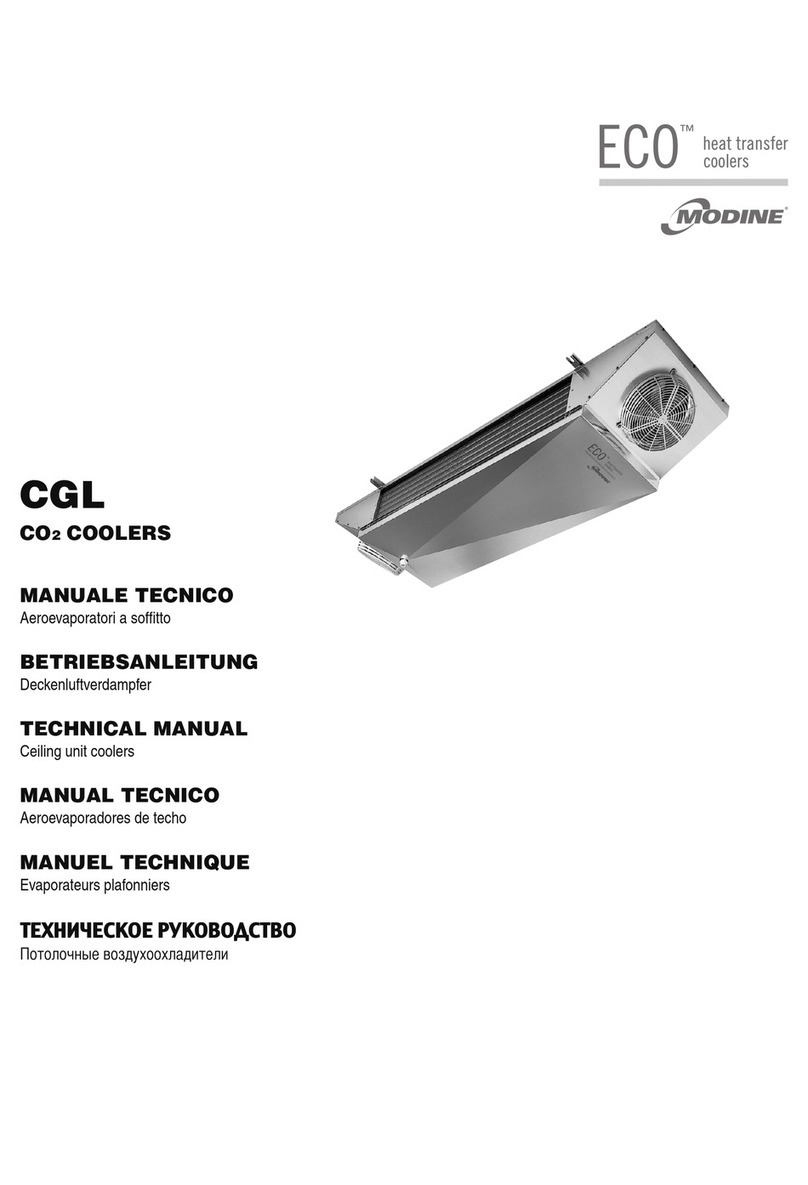
2www.modine.com
Attenzione
Prima di effettuare qualsiasi intervento di manutenzione, accertarsi che l’alimentazione elettrica sia scollegata dalla fonte principale: le
parti elettriche potrebbero essere collegate ad un controllo automatico.
Avvertenze
1. Conservare questo manuale tecnico per tutto il periodo di vita
del modello.
2. Leggere con attenzione il manuale prima dell’installazione e
prima di qualsiasi operazione sul modello.
3. mpiegare il modello esclusivamente per lo scopo per cui é
stato progettato: l’uso improprio esonera il costruttore da qual-
siasi responsabilità.
Ispezi ne - Trasp rt
1. Al ricevimento del modello controllare immediatamente il suo
stato; contestare subito alla compagnia di trasporto qualsiasi
eventuale danno.
2. Gli scambiatori vengono forniti con una precarica di aria secca
a 2 bar e dispongono di attacchi di carica da 1/4” SAE.
Verificare la presenza di pressione, in assenza di pressione
contattare immediatamente il costruttore e segnalare il proble-
ma sul documento di trasporto. La mancanza di pressione indi-
ca una perdita dovuta ad un danno subito durante il trasporto.
3. Durante il trasporto evitare di esercitare pressioni improprie
sull’imballaggio, che va mantenuto comunque sempre nella
posizione indicata sullo stesso.
4. Disimballare il modello il più vicino possibile al luogo di installa-
zione. Una volta disimballato, evitare urti ai componenti.
5. Durante l’installazione e la movimentazione del modello utiliz-
zare appositi guanti protettivi per evitare di ferirsi con le parti
taglienti (es. alette) del modello.
C ndizi ni da verificare per una
c rretta messa in pera
1. Verificare la tenuta delle strutture di sostegno rispetto al peso
dell’apparecchio.
2. Verificare che il modello venga installato orizzontalmente.
3. Assicurare un volume libero adeguato (circa il 30% del volume
interno della cella) per una corretta circolazione dell’aria in
aspirazione e scarico.
articolari condizioni di installazione o funzionamento quali
celle basse, travature a soffitto, stoccaggi eccessivi, impedi-
menti al getto e/o all’aspirazione dell’aria, formazione impro-
pria di brina dovuta ad eccessiva immissione di umidità nella
cella, possono influenzare negativamente le prestazioni
dichiarate e creare difettosità nei modelli.
I modelli standard possono non essere adatti ad operare in
tunnel o celle di abbattimento/surgelamento rapido.
4. modelli sono equipaggiati con motoventilatori assiali, quindi
non adatti ad essere canalizzati o comunque a sopportare pre-
valenze statiche aggiuntive.
5. Verificare che le condizioni di funzionamento (temperature e
pressioni) siano conformi a quelle di progetto.
6. Prima del taglio dei manicotti di ingresso e/o uscita scaricare la
pressione di precarica (2 bar circa) dallo scambiatore.
7. Prestare particolare cura in fase di collegamento affinchè non si
deformino i capillari e non si modifichi la posizione del distributore.
8. n caso di più modelli installati a breve distanza l’uno dall’altro,
evitare sbrinamenti alternati.
9. nstallare sugli scarichi condensa gli opportuni sifoni e verificar-
ne l'efficacia in tutte le temperature di utilizzo.
10. Evitare l'installazione degli aeroevaporatori vicino alle porte
delle celle.
11. Collocare la sonda di temperatura per il fine sbrinamento nelle
zone più fredde degli scambiatori, ovvero quelle zone che ten-
dono a ghiacciarsi maggiormente (al termine del ciclo non deve
rimanere ghiaccio sui modelli). La posizione di questo dispositi-
vo non può essere definita a priori, in quanto varia in relazione
al tipo di cella e al tipo di impianto.
12. Verificare che la linea elettrica di alimentazione sia adeguata
alle caratteristiche elettriche dell’apparecchio.
13. Assicurarsi che tutti i collegamenti elettrici siano in accordo con
le norme vigenti.
14. Le unità sono predisposte per il collegamento elettrico a terra.
L’installattore e/o il conduttore dell’unità sono tenuti a garantire
la presenza di un efficiente collegamento alla terra di protezio-
ne contro i contatti elettrici indiretti.
A richiesta i modelli possono essere forniti con scambiatori,
sbrinamenti e motoventilatori diversi dallo standard.
Le resistenze elettriche impiegate per l’eventuale sbrinamento
sono alloggiate in scatola di derivazione in materiale termopla-
stico (protezione contro il contatto elettrico diretto di classe )
aventi grado di protezione P 54.
15. Ad installazione completata rimuovere la pellicola protettiva
che ricopre il modello.
16. L’accessibilità al modello, per qualsiasi tipo di intervento, deve
essere riservata al personale qualificato alla conduzione del-
l’impianto, secondo le norme vigenti.
Manutenzi ne generale
1. Verificare periodicamente i fissaggi, le connessioni elettriche e i
collegamenti all’impianto frigorifero.
2. Provvedere alla pulizia periodica dell’apparecchio, per evitare
accumuli di sostanze nocive. Si consiglia l’utilizzo di normale
acqua saponata, evitando solventi, agenti aggressivi, abrasivi o
a base di ammoniaca.
3. n caso di sostituzioni di resistenze elettriche prestare particola-
re attenzione nelle fasi di installazione per evitare danni alle
vulcanizzazioni; ripristinare correttamente i collegamenti e i
sistemi di fissaggio esistenti per evitare movimenti delle stesse
durante il funzionamento.
Tali operazioni dovranno essere effettuate da personale
esperto e qualificato.
Peric li
1. Pericolo di elettrocuzione. l modello è provvisto di
elettroventilatori e in opzione di resistestenze
elettriche di sbrinamento. Utilizzare sistemi di
sicurezza elettrica previsti dalla normativa vigente.
2. Pericolo di ustione. Le resistenze elettriche di
sbrinamento possono raggiungere temperature
superficiali di 350°C.
3. Pericolo di taglio. Lo scambiatore di calore è
costituito da alette con bordi taglienti e la carrozzeria
da parti in lamiera.
4. Pericolo parti in movimento. l modello è provvisto di
elettroventilatori dotati di griglia di protezione esterna.
5. Pericolo di schiacciamento. l modello può pesare
oltre 100 kg.
N rme di riferiment
- D RETT VA MACCH NE 2006/42/EC
- D RETT VA BASSA TENS ONE 2014/35/UE
- D RETT VA COMP. ELETTROMAGNET CA 2014/30/UE
- D RETT VA PED 2014/68/UE
- D RETT VA ERP 2009/125/EC
